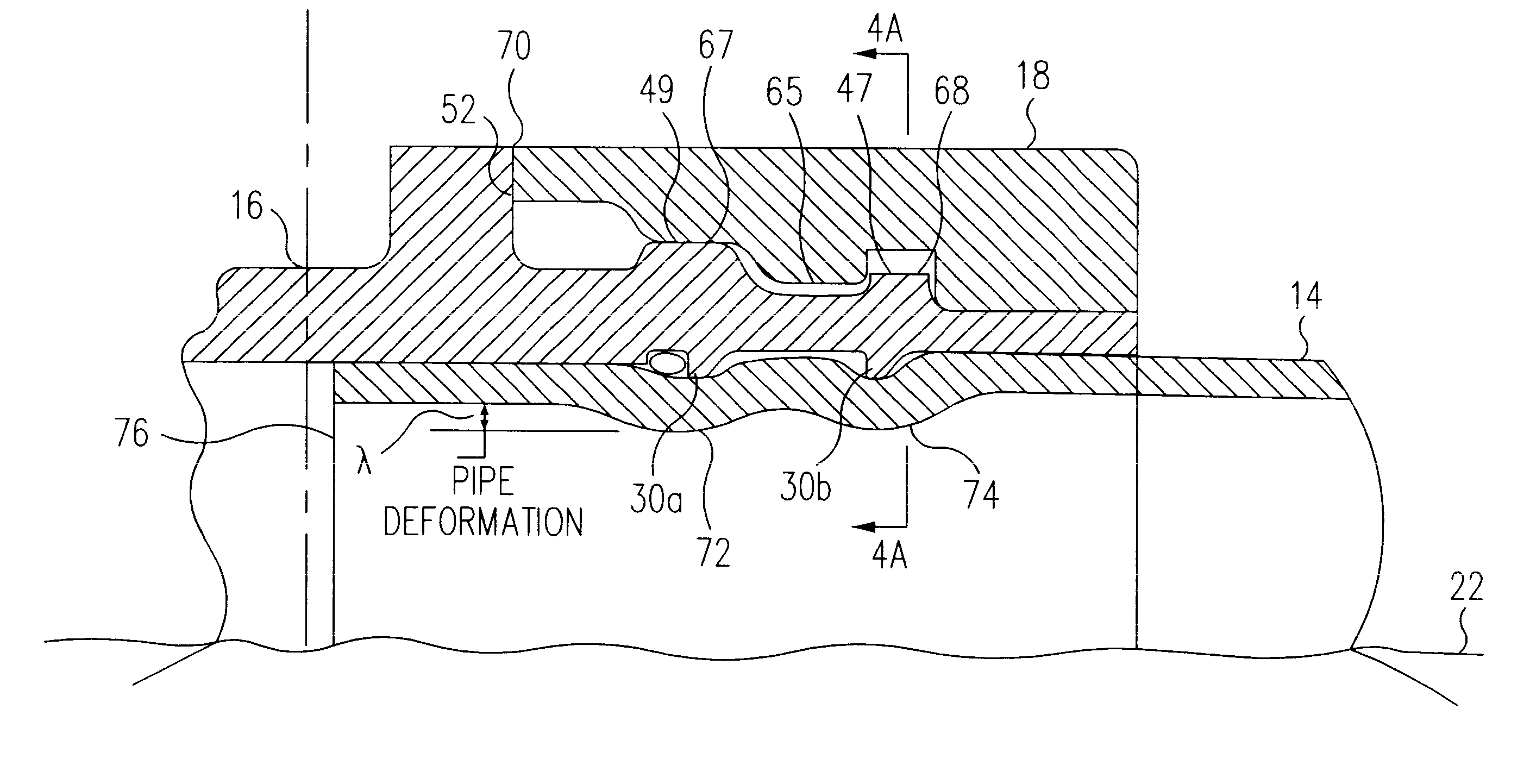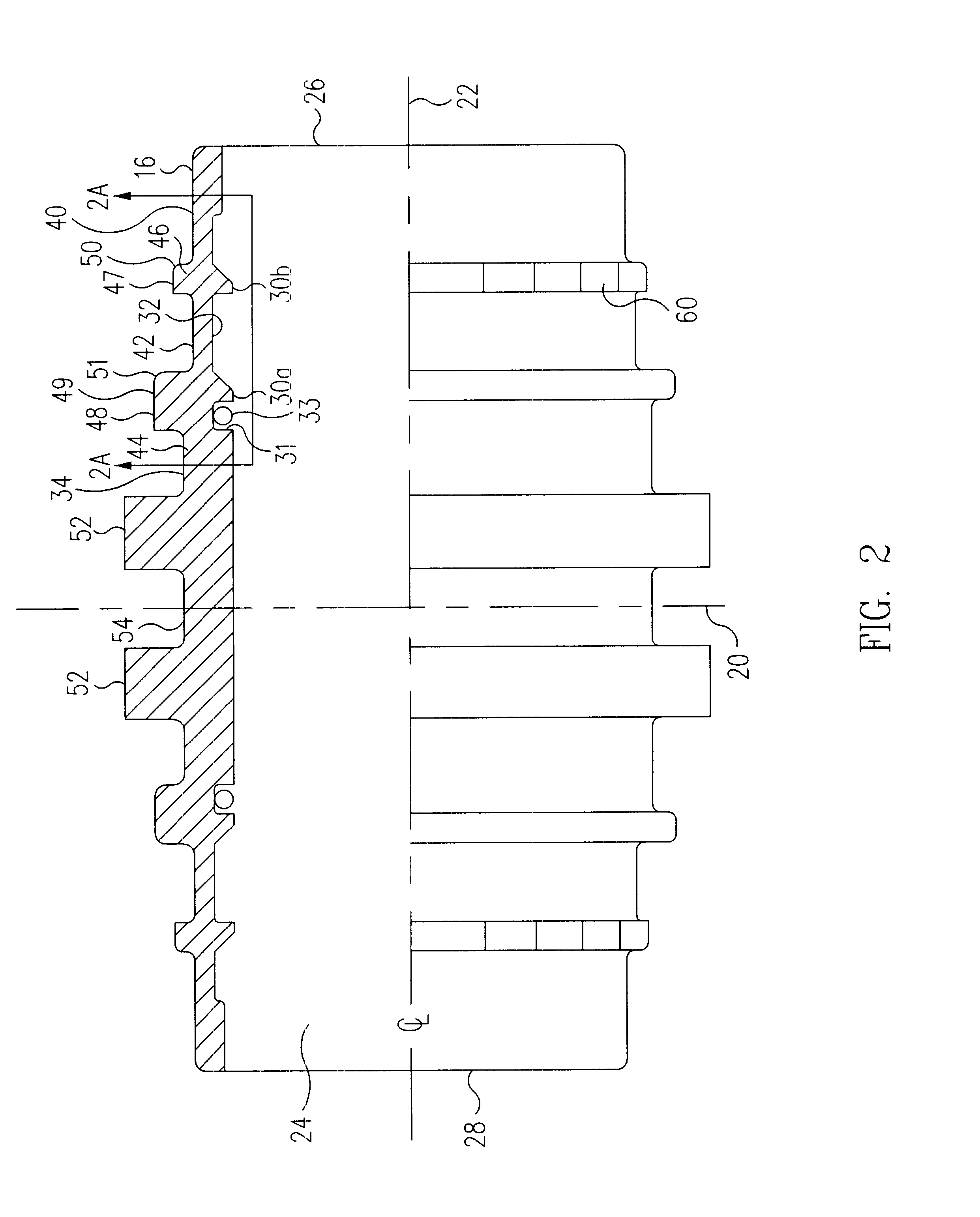Axial swage fitting for large bore pipes and tubes
a technology of axial swage and pipe, which is applied in the field of fittings, can solve the problems of insufficient pipe retention capability of existing swaging tools, inability to meet the requirements of swaging techniques widely used in pipe and tube with large diameter, and insufficient swaging force to deform the sleeve and pipe during swaging, so as to improve couplings and improve couplings. the effect of coupling capacity and enhanced tensil
- Summary
- Abstract
- Description
- Claims
- Application Information
AI Technical Summary
Benefits of technology
Problems solved by technology
Method used
Image
Examples
Embodiment Construction
Embodiments of the present invention will be described with reference to the aforementioned figures. These figures have been simplified for ease of understanding and describing the embodiments.
FIG. 1 is an external view of a fitting 10 in accordance with an embodiment of the present invention. Fitting 10, which includes a sleeve 16 and two swage rings 18, can be used equally well to secure together pipes, tubes, conduits, and the like. As shown in FIG. 1, fitting 10 is broadly symmetrical about centerline 20 and central axis 22. Thus, the description of fitting 10 will be directed to only one end of fitting 10, with reference to the other end, only when necessary to describe a feature of the invention, since it is understood that the other end is structurally and functionally the same. However, depending on the application for fitting 10, a complete fitting may include only one end of fitting 10, such as when the fitting is used to cap the end of a pipe. Moreover, fitting 10 is not ...
PUM
| Property | Measurement | Unit |
|---|---|---|
| diameter | aaaaa | aaaaa |
| burst pressures | aaaaa | aaaaa |
| burst pressures | aaaaa | aaaaa |
Abstract
Description
Claims
Application Information
 Login to View More
Login to View More - R&D
- Intellectual Property
- Life Sciences
- Materials
- Tech Scout
- Unparalleled Data Quality
- Higher Quality Content
- 60% Fewer Hallucinations
Browse by: Latest US Patents, China's latest patents, Technical Efficacy Thesaurus, Application Domain, Technology Topic, Popular Technical Reports.
© 2025 PatSnap. All rights reserved.Legal|Privacy policy|Modern Slavery Act Transparency Statement|Sitemap|About US| Contact US: help@patsnap.com



